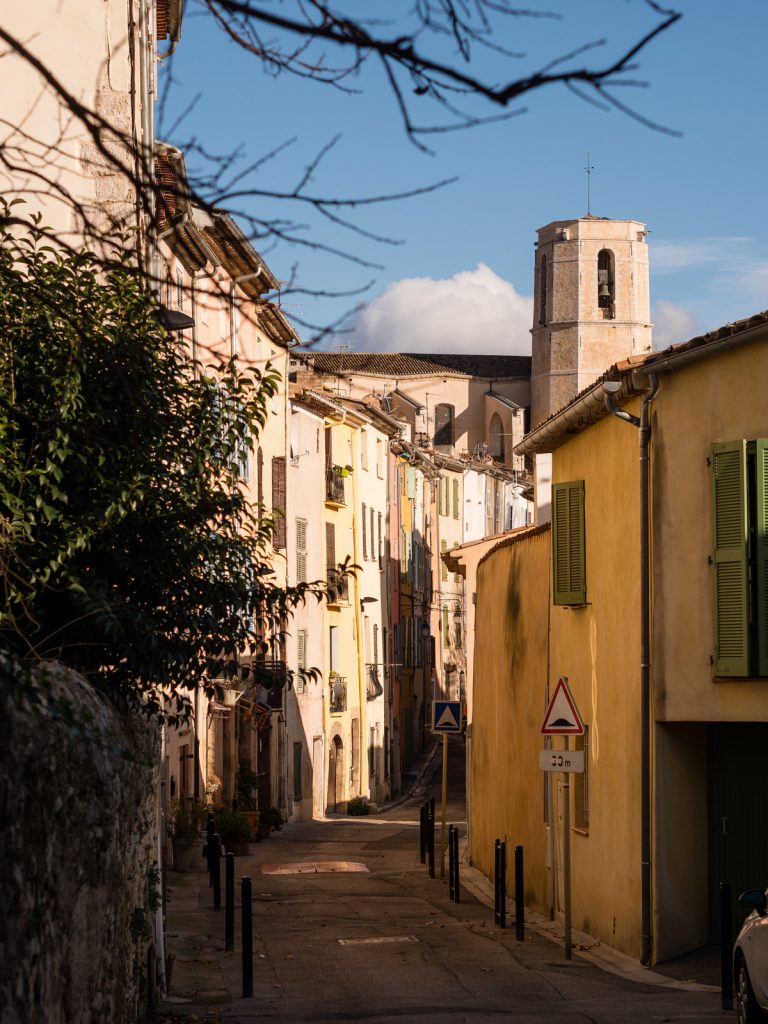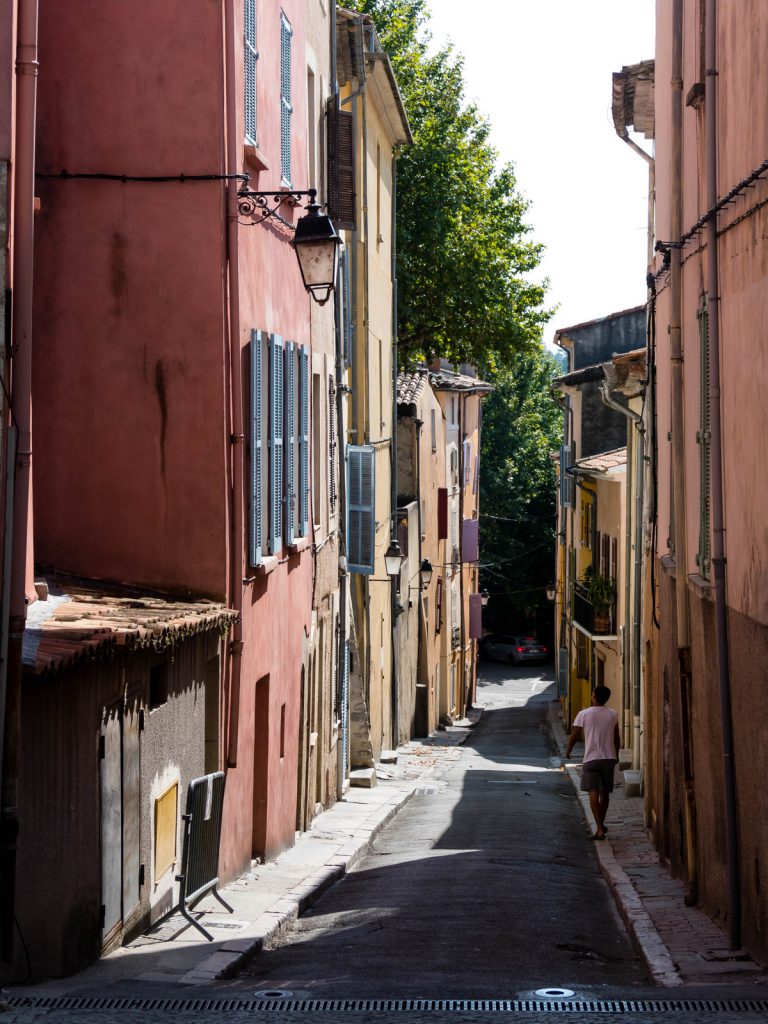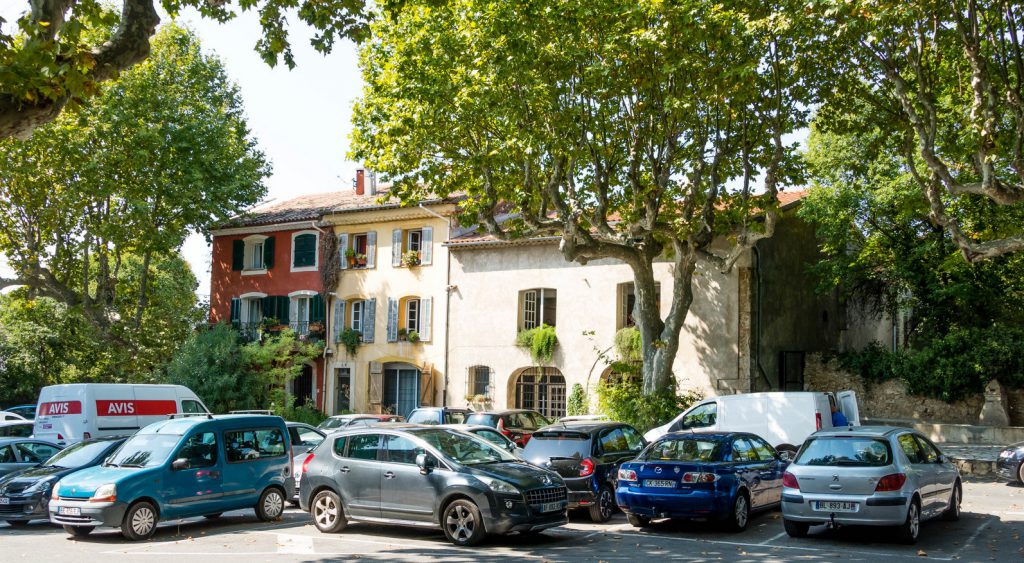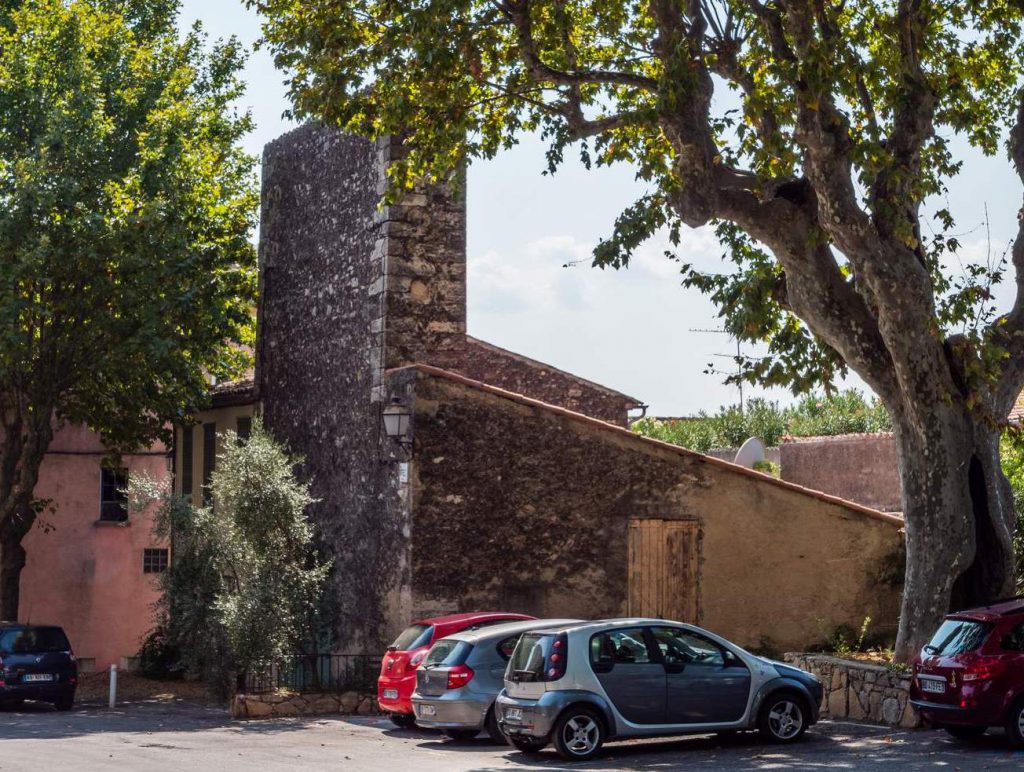The town continued to grow, with many new religious buildings (some have been converted to other use, others no longer exist) in addition to town houses. In 1579 Lorgues withstood a siege of six weeks during the Wars of Religion, during which the Fountain of the Pump kept working and so saved the inhabitants.
In 1623 the present ‘campanile’ – open bell tower – was erected by raising the height of a tower at the corner of the old ramparts. This is the Tour du Campanile. Many houses were built to the south of what is now the Avenue de la Republique, in the area to the west of the new collegiate Church of Saint Martin which was the town’s major building project in the early 18th century (1704-1729). From the middle of the 17th century Lorgues had its coat of arms, representing its motto of Force et Fidélité (Strength and Loyalty).
A livestock market was held from around the 18th century on the edge of the old town in Les Aires Neuves, now Place Accarisio (below left), where wheat was also threshed. One of the eight olive oil mills in Lorgues, the mill of Saint Martin (1776) can be seen in the square (below right); it got its power from the local canal.
Lorgues was one of 12 vigueries (an area for administering justice and finance), and the Palais de Justice (1768) in Place Neuve was built to house the law courts. A symbol of civil pride, the “Walnut” Fountain (Fontaine de la Noix) was erected in 1771.



